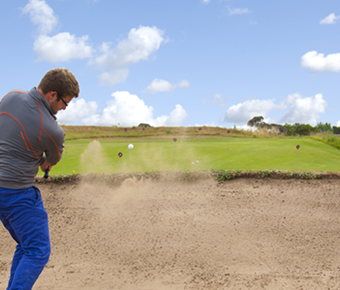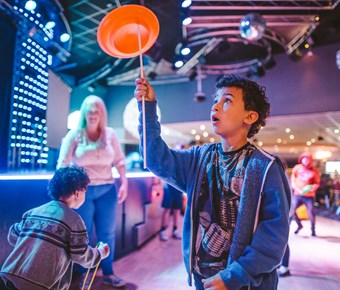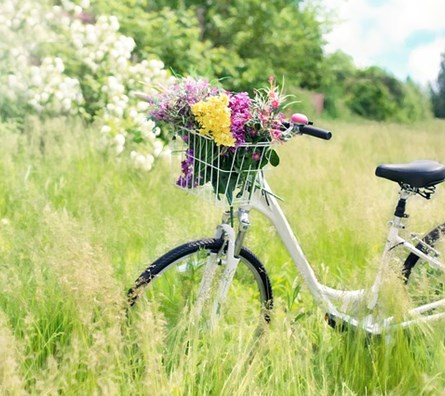It always pays to book direct with us - Secure your break for a low deposit! 🏕️
Nevermind the famous Glastonbury Festival or the flavoursome cheddar cheese that Somerset gave to us, this South-West county has much more to offer. If you’re a nature-lover and have a keen interest in the wildlife of our countrysides then Somerset is the ideal place to begin your outdoor adventure.
Boasting acres and acres of stunning views, sandy beaches, and breathtaking landscapes, Somerset is home to hundreds of species of wildlife. Being one of the biggest counties in the UK, Somerset’s nature reserves are second-to-none and cover over 1,700 hectares of different habitats. You may think it’s only home to the tasty Thatcher’s Gold, but this wildlife haven is home to a diverse range of creatures and iconic species such as the Bittern and Large Blue Butterfly.
Here at Holiday Resort Unity we are committed to protecting and preserving the environment and always put our green-hand towards making a sustainable future. If you’re as passionate for wildlife as we are, then read on because we’re about to dive right into some of the most beautiful creatures you can lay your eyes on here in Brean, Somerset, and the surrounding areas.
The Fishing Lake
Dive beneath the waves and experience what it’s really like under the water by swimming closer to the weird and wonderful aquatic creatures on display at our very own Fishing Lake. You’ll have the chance to get up close and personal to the beautiful and exciting swimmers of our lake, and here’s what you can expect to find…
Tench
Scientifically known as Tinca tinca, that’s right named twice because it’s such a wonderful creature that loves to roam in shallow waters and be surrounded by an abundance of vegetation. The Tench has a build of thick and heavy scales, which are often coloured olive green with bronze colouring on its belly.
Unfortunately, this carnivorous creature has been described as excessively slimy, so we recommend zero touching. Due to having extremely small eyes, the tench finds food by using its short sensory organs on either side of its mouth called barbels. The tench often collects its food from the bottom of lakes and feeds on snails, mosquito larvae, small creatures, algae, and plant matter.
Roach
Known as the unfussy eater of the lake waters, the roach feeds on practically anything it can get its fins on such as insects, snails, crustaceans, and vegetable matter. If you come across a roach be sure to say ‘ello guv’nor as it’s well and truly native to the Southern parts of England, that or ‘get outta my pond’.
You’ll be able to spot a roach a mile off thanks to its shimmering metallic blue colour that lights up clear waters. Its body is actually more commonly silver and in some waters can even be seen to be a copper-yellow colour – talk about an underwater chameleon!
One of the main ways to know you’ve seen a roach is by looking into its eyes. And no, we don’t mean longily (unless you want to), it’s because they have deep red eyes!
Bream
Say hello to the social butterfly of the fishing lake, because the bream likes to live and swim in schools. So, if you happen to spot a bream, you’ll probably be able to see a number of them!
It has a small, scaleless head with extremely flat sides, which helps the bream to be streamlined in its schools. Its colouring is a mix of silver, blue, and brown, which means it can sometimes be confused with other species such as roach.
Unlike the roach, the bream lacks the red eyes but its mouth has the ability to extend ventrally to create a tube shape. This technique helps the bream with its feeding habits along the bottom of waterbeds where it feeds on worms, mollusks, and other small animals.
Carp
Unlucky for the carp species they are constantly compared to trout and have therefore been dubbed the unattractive, slimy version. You can distinguish whether or not the species is a carp by looking out for a pair of barbels on either side of its mouth, paired with small eyes, thick lips, and a forked tail.
When it comes to dinner time, carp are omnivorous and its diet depends on what’s available and what it can get its fins on. Snacking on foods such as molluscs, crustaceans, insect larvae, seeds, and anything it can find at the bottom of the waterbed.
Other Waters
The underwater adventure doesn’t stop there because the coastlines of Brean and Somerset are full to the brim with more fin-tastic creatures for you to study. Take a trip to Brean Down and you can immerse yourself on an aquatic journey to sight the following species…
Cod
You won’t be finding these cod with a side of chips, you’ll find them swimming in the waters in large groups of schools. Don’t worry, either, because they’re extremely slow swimmers so you won’t be able to miss them.
Cod have a spotted pattern on its scales and are often a grey-green colour. Lookout for a barbel on its chin, which they use as tastebuds to help find its food of herring, shrimp, squid, capeline, and sand eels.
Conger Eel
One of the longest eels in the world, the conger eel tends to slither between rocks thanks to its snakelike body. It has a fin that runs along the whole length of its back and depending on its species it can have the colouring of grey, dark brown, black, or deep red.
Known as olfactory holes, conger eels have two of these that work similar to a nose to help detect scents in the water, which helps with hunting prey. A conger eel’s prey consists of cod, hake, mackerel, herring, crabs, and lobsters.
On Land
If the thought of causing a splash gives you that sinking feeling, then don’t worry because there’s plenty of other incredible animals to keep your Somerset wildlife adventures alive.
Here at Holiday Resort Unity we’re holders of the David Bellamy Gold Award, which is awarded to holiday parks who show concern and care for the environment and their natural surroundings. So, it’s no surprise that in our parks you’ll be greeted by some amazing wildlife and have the chance to meet some of the most beautiful creatures in the South-East of England.
Aside from the common sightings of ducks, swans, and geese, here’s what else you can expect to find roaming or flying in and around Holiday Resort Unity…
Ladybirds
With over 5,000 different species of ladybirds it can be hard to tell which ladybird you’ve actually sighted. Fluttering around in many different colours and patterns, you’ll be able to tell the different species apart by the number of spots on its back. The most common ladybird to be seen in the UK is the seven-spot ladybird, which has a very shiny red and black body.
Ladybirds are seen as very pretty creatures and are adored by farmers as they feed on aphids and plant-eating pests. Here are some of the other species of ladybirds you may come across…
Cream spotted
Kidney spot
Larch ladybird
Pine ladybird
Water ladybird
Large Blue Butterflies
Much like the name suggests the large blue butterfly has stunning blue wings with a wingspan of 2 inches. Its stunning wings are speckled with black dots and is extremely rare to spot in Britain.
If you’re on the lookout for this blue gem of a creature then you should know that they like to congregate around acidic coastal grassland or limestone grassland.
Hares
Not to be confused with the hopping and bopping of a rabbit, a hare is a type of rodent and belongs to the Lepus family. With long hind legs, a furry coat, and a short tail, hares are able to leap extremely far and fast. These bouncing creatures are actually born with their eyes open, which are located on the sides of their heads to help them spot prey and predators easier.
If you’re lucky enough to see a group of them springing around it’s called a Warren or a Down, whilst males are called bucks, females called does, and babies called leverets.
Kestrels
Made famous by Ken Loach and his big screen blockbuster of Kes, kestrels are commonly a chestnut brown, with yellow legs, and a bluish hooked bill. Female kestrels are slightly bigger than their male counterparts, and they can both be found perching on branches or doing their trademark hovering, which has given them the nickname of ‘windhover’.
Kestrels hunt mainly from static perches and feed on voles, shrews, mice, and small birds. However, if you’ve seen the film then you’d know these birds are extremely adaptable and can change their diet depending on what’s available, which is why they also feed on meat scraps, worms, snails, and grasshoppers.
Buzzard
Time to meet the romantic wings of the sky as the common buzzards are monogamous and stay with their mate for life. The males actually conduct a performance to impress the females by twisting in the air known as ‘the roller coaster’ to get their chosen female’s attention. So, keep an eye out for aerial dances and you would have spotted a common buzzard.
Buzzards feed on small mammals and birds, earthworms, and large insects. You’ll probably sight these Romeo’s by hedgerows, woodlands, and moorlands.
Water Voles
Meet the largest species of vole in the whole of Britain, the water vole. Often mistaken for brown rats, water voles have shiny dark brown fur, small black eyes, and a blunt muzzle.
These little busy-bodies are very active during the day and can be found by burrows along the banks of rivers, lakes, and ponds. These chubby-cheeked creatures actually eat 80% of their own body weight on a daily basis, while also feeding on grass, weeds, tree bark, roots, and fruit.
Owls
The bird that’s sure to give everyone a hoot, there are over 200 different species of owl. If you’re off on an early evening or late night stroll, then the owls will be sure to join you thanks to their nocturnal nature.
These flat-faced and large-eyed birds are able to turn their heads 270 degrees to keep an eye on everything throughout the night. Despite their night vision eyesight, owls are actually farsighted, so are unable to see clearly if things are close to them.
Owls come in a variety of colours and the colour of its feathers often reflect its surroundings to help blend into its environment. Hunting insects, small mammals, other birds, and sometimes even fish, owls have extremely powerful claws (also known as talons) to help with its hunting.
Red Deer
The largest deer species to roam around Somerset, you’ll notice these beautiful creatures by their stunning antlers and red-brown coloured fur. Feeding on grasses and sedges throughout the summer months, the male red deer is known as a stag and the female known as a hind.
Known to be quite inactive during the day, red deer love to socialise just like us and live in summer herds with up to 400 other red deer. Now, that’s what we call a summer gathering!
Stoat
With a likeness to a weasel, stoats are very agile, good climbers, excellent swimmers, with heightened senses of sight, smell, and hearing. Stoats are capable of crossing large rivers and climbing tall trees, so you may have to lift your head back to catch a glimpse of them.
Found by shorelines, moorlands, and marshes, stoats feed on rabbits, rodents, hares, and birds.
Want To See The Wildlife?
Have you got your walking boots at the ready and your binoculars in hand? It’s time to start your Somerset adventures and feel at one with nature. If you need somewhere to rest and catch up on all the breathtaking wildlife and views, then take a look at how close you can stay to nature with us.
If you spot any of the animals listed above or sight some new wildlife, let us know on Facebook or Twitter!













